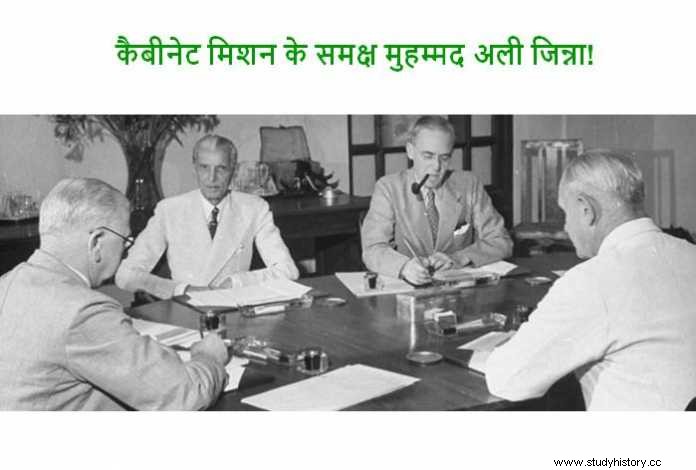
The Cabinet Mission Plan of 16 May 1946, though presented in the form of a recommendation, was still no less than a Panch-Niyya (jtpthanchhs.tq). With the publication of the plan, the work of the Cabinet Mission in India was completed and now it was to return to England. Before leaving India, the mission made a statement to Indian newspapers- 'The cabinet proposal is a way to give freedom to Indians at the earliest in which the chances of internal disturbances and conflicts are minimal.
On 29 June 1946, the Cabinet Mission left India with the hope that if nothing else, at least the Constituent Assembly would be formed. Cripps and Pethick Lawrence declared in the British Parliament that- 'The mission was successful in achieving its objective.
Yes of Congress.....!
Although the cabinet plan was not according to the wishes of the Congress, Jawaharlal Nehru was confident that there would be no grouping of provinces proposed in the cabinet plan. Because all of the division 'A' and some states of 'B' and 'C' will be against the grouping. Nehru's thinking was absolutely right because the Hindus of Punjab and Bengal could not ax their feet by accepting this plan. Therefore, Nehru proposed to accept the cabinet plan in the Congress Working Committee meeting on 6-7 July 1946 which was approved by 205 votes against 51. Thus Congress accepted the cabinet plan.
yes of the native kings…..!
The wishes of the kings were going to be fulfilled through the cabinet mission and they were once again going to be in the pre condition i.e. fully independent states before AD 1817-18. Therefore, in the conference of Narendra Mandal held on 17 July 1946, the kings did not let go of the opportunity to display themselves as patriots by hiding the water coming in their mouths and declared that Narendra Mandal fully agreed with the wish of the country. India should get immediate political glory. The desire of the kings is to make every possible contribution to the task of resolving constitutional problems.
Muhammad Ali Jinnah's yes…..!
The demand of Pakistan was not accepted directly in the Cabinet Mission Plan, but on the basis of Hindu-majority, Muslim majority and light majority of Muslims in the provincial legislative assemblies, 'A', 'B' and 'C' groups were formed. It was said that those who could make a separate constitution for themselves.
Jinnah saw the hope of the creation of Pakistan in the future in this grouping plan. So he decided to accept this plan even if he did not get Pakistan directly. Cabinet convened to consider mission plan
The resolution passed in the meeting of the Muslim League said that- 'The achievement of the goal of a complete sovereign Pakistan remains the unchanging objective of the Muslims of India, so we accept both the long term and the interim parts of it. Because Pakistan's base is implicit in the mission plan. '
Thus Jinnah fell into the trap of the Cabinet Mission and the way for India's independence appeared to be cleared. Jinnah who had been shedding the blood of the Indian people and the sweat of the Muslim League leaders for the last fifteen years for the cause that the British should break India to pieces before it was liberated, the same Jinnah allowed the British to leave India without breaking India. was giving. Even an ordinary person, having read a few pages of politics, could have guessed that Jinnah was soon going to burn in a terrible fire of repentance for his decision.
